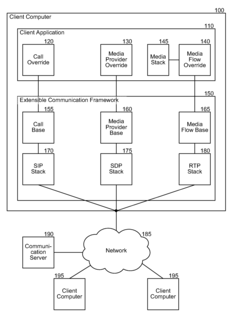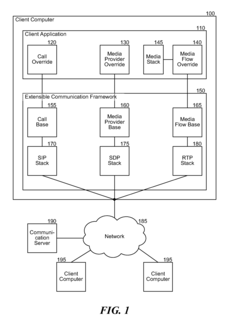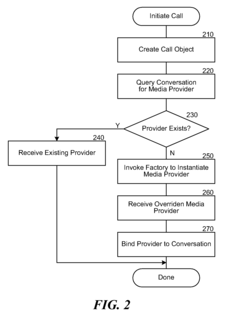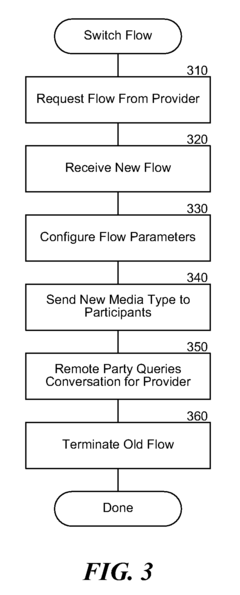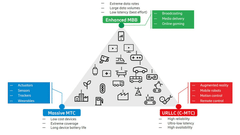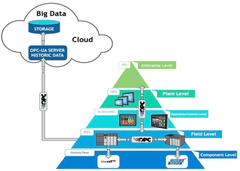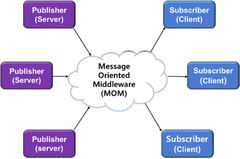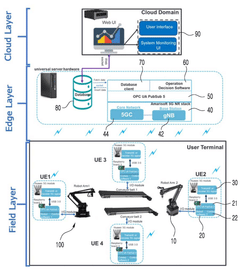How 5G UC Supports Real-Time Collaboration in Film Production
JUL 18, 20259 MIN READ
Generate Your Research Report Instantly with AI Agent
Patsnap Eureka helps you evaluate technical feasibility & market potential.
5G UC in Film Production: Background and Objectives
The film industry has undergone significant transformations over the years, driven by technological advancements. One of the latest innovations poised to revolutionize film production is 5G UC (Ultra-Capacity) technology. This next-generation wireless network promises to address longstanding challenges in the industry, particularly in the realm of real-time collaboration.
Historically, film production has been a complex, time-consuming process involving multiple teams working in different locations. Communication and collaboration between these teams have often been hindered by technological limitations, resulting in delays, increased costs, and compromised creative vision. The advent of 5G UC technology presents an opportunity to overcome these obstacles and usher in a new era of efficient, seamless collaboration in film production.
5G UC technology builds upon the foundation of 5G, offering enhanced capabilities such as ultra-low latency, massive device connectivity, and significantly higher data transfer speeds. These features are particularly relevant to the film industry, where large amounts of data need to be transmitted and processed in real-time across various production stages.
The primary objective of implementing 5G UC in film production is to enable real-time collaboration among diverse teams involved in the filmmaking process. This includes directors, cinematographers, editors, visual effects artists, and other crew members who may be geographically dispersed. By leveraging 5G UC's capabilities, the industry aims to create a more interconnected and efficient production environment.
Key goals of integrating 5G UC into film production include reducing production timelines, minimizing reshoots, enhancing creative flexibility, and optimizing resource allocation. The technology is expected to facilitate instant sharing of high-quality video feeds, real-time remote editing, and seamless integration of visual effects, all of which can significantly streamline the production workflow.
Moreover, 5G UC has the potential to democratize film production by enabling smaller studios and independent filmmakers to access advanced production techniques that were previously only available to large studios with substantial resources. This could lead to a more diverse and innovative film industry, fostering creativity and expanding the boundaries of storytelling.
As the film industry continues to evolve, the integration of 5G UC technology represents a significant step towards a more connected, efficient, and creative future. The successful implementation of this technology could redefine collaborative workflows, enhance the quality of productions, and ultimately transform the way stories are brought to life on screen.
Historically, film production has been a complex, time-consuming process involving multiple teams working in different locations. Communication and collaboration between these teams have often been hindered by technological limitations, resulting in delays, increased costs, and compromised creative vision. The advent of 5G UC technology presents an opportunity to overcome these obstacles and usher in a new era of efficient, seamless collaboration in film production.
5G UC technology builds upon the foundation of 5G, offering enhanced capabilities such as ultra-low latency, massive device connectivity, and significantly higher data transfer speeds. These features are particularly relevant to the film industry, where large amounts of data need to be transmitted and processed in real-time across various production stages.
The primary objective of implementing 5G UC in film production is to enable real-time collaboration among diverse teams involved in the filmmaking process. This includes directors, cinematographers, editors, visual effects artists, and other crew members who may be geographically dispersed. By leveraging 5G UC's capabilities, the industry aims to create a more interconnected and efficient production environment.
Key goals of integrating 5G UC into film production include reducing production timelines, minimizing reshoots, enhancing creative flexibility, and optimizing resource allocation. The technology is expected to facilitate instant sharing of high-quality video feeds, real-time remote editing, and seamless integration of visual effects, all of which can significantly streamline the production workflow.
Moreover, 5G UC has the potential to democratize film production by enabling smaller studios and independent filmmakers to access advanced production techniques that were previously only available to large studios with substantial resources. This could lead to a more diverse and innovative film industry, fostering creativity and expanding the boundaries of storytelling.
As the film industry continues to evolve, the integration of 5G UC technology represents a significant step towards a more connected, efficient, and creative future. The successful implementation of this technology could redefine collaborative workflows, enhance the quality of productions, and ultimately transform the way stories are brought to life on screen.
Market Demand for Real-Time Collaboration in Filmmaking
The film industry has witnessed a growing demand for real-time collaboration tools, driven by the need for increased efficiency, cost reduction, and creative flexibility. As production teams become more geographically dispersed, the ability to collaborate seamlessly across distances has become crucial. This trend has been further accelerated by the global pandemic, which forced many productions to adopt remote working practices.
Real-time collaboration in filmmaking encompasses various aspects of the production process, including pre-production planning, on-set communication, remote directing, and post-production workflows. The market for these technologies is expanding rapidly, with a particular focus on solutions that can handle the high-bandwidth requirements of video streaming and real-time data transfer.
One of the key drivers of this demand is the increasing complexity of film productions, which often involve multiple units shooting simultaneously in different locations. Real-time collaboration tools enable directors, cinematographers, and other key creatives to monitor and provide feedback on footage as it's being shot, regardless of their physical location. This immediate feedback loop can significantly reduce the need for reshoots and streamline the decision-making process.
Another factor contributing to the market demand is the rise of virtual production techniques, which blend physical and digital elements in real-time. These advanced production methods require robust collaboration platforms that can handle complex data streams and allow for instant communication between on-set crews and remote visual effects teams.
The post-production phase has also seen a surge in demand for real-time collaboration tools. Editors, colorists, and visual effects artists increasingly need to work together in real-time, sharing high-resolution footage and making collaborative decisions on edits and effects. This has led to a growing market for cloud-based post-production solutions that offer real-time collaboration features.
Financial considerations are driving adoption as well. Real-time collaboration can lead to significant cost savings by reducing travel expenses, minimizing production delays, and optimizing resource allocation. As budgets come under increased scrutiny, production companies are actively seeking technologies that can improve efficiency without compromising creative quality.
The market is also seeing demand from smaller production companies and independent filmmakers who are looking for affordable, scalable solutions that can give them access to talent and resources regardless of geographical constraints. This democratization of film production tools is opening up new opportunities for collaboration and creativity in the industry.
As the film industry continues to evolve, the demand for real-time collaboration tools is expected to grow further. The market is likely to see increased integration of artificial intelligence and machine learning technologies to enhance collaboration capabilities, as well as the development of more immersive and intuitive interfaces for remote interaction.
Real-time collaboration in filmmaking encompasses various aspects of the production process, including pre-production planning, on-set communication, remote directing, and post-production workflows. The market for these technologies is expanding rapidly, with a particular focus on solutions that can handle the high-bandwidth requirements of video streaming and real-time data transfer.
One of the key drivers of this demand is the increasing complexity of film productions, which often involve multiple units shooting simultaneously in different locations. Real-time collaboration tools enable directors, cinematographers, and other key creatives to monitor and provide feedback on footage as it's being shot, regardless of their physical location. This immediate feedback loop can significantly reduce the need for reshoots and streamline the decision-making process.
Another factor contributing to the market demand is the rise of virtual production techniques, which blend physical and digital elements in real-time. These advanced production methods require robust collaboration platforms that can handle complex data streams and allow for instant communication between on-set crews and remote visual effects teams.
The post-production phase has also seen a surge in demand for real-time collaboration tools. Editors, colorists, and visual effects artists increasingly need to work together in real-time, sharing high-resolution footage and making collaborative decisions on edits and effects. This has led to a growing market for cloud-based post-production solutions that offer real-time collaboration features.
Financial considerations are driving adoption as well. Real-time collaboration can lead to significant cost savings by reducing travel expenses, minimizing production delays, and optimizing resource allocation. As budgets come under increased scrutiny, production companies are actively seeking technologies that can improve efficiency without compromising creative quality.
The market is also seeing demand from smaller production companies and independent filmmakers who are looking for affordable, scalable solutions that can give them access to talent and resources regardless of geographical constraints. This democratization of film production tools is opening up new opportunities for collaboration and creativity in the industry.
As the film industry continues to evolve, the demand for real-time collaboration tools is expected to grow further. The market is likely to see increased integration of artificial intelligence and machine learning technologies to enhance collaboration capabilities, as well as the development of more immersive and intuitive interfaces for remote interaction.
Current State and Challenges of 5G UC in Film Industry
The integration of 5G UC (Ultra-Reliable Low-Latency Communication) technology in the film industry is currently in its early stages, with significant potential for revolutionizing real-time collaboration in film production. While the technology promises to address many existing challenges, its implementation and widespread adoption face several hurdles.
One of the primary advantages of 5G UC in film production is its ability to enable high-speed, low-latency communication between various production teams and locations. This capability allows for seamless real-time collaboration, particularly in areas such as remote directing, instant feedback on shots, and live editing. However, the current state of 5G UC implementation in the film industry is limited, with only a few pioneering projects and experimental setups exploring its full potential.
The challenges facing the adoption of 5G UC in film production are multifaceted. Infrastructure limitations pose a significant obstacle, as many filming locations lack the necessary 5G network coverage. This is particularly problematic for on-location shoots in remote areas, where establishing reliable 5G connectivity can be both technically challenging and cost-prohibitive.
Another major challenge is the integration of 5G UC technology with existing film production workflows and equipment. Many current camera systems, editing suites, and other production tools are not yet optimized for 5G connectivity, requiring significant upgrades or replacements. This technological gap creates a barrier to adoption, especially for smaller production companies with limited budgets.
Data security and privacy concerns also present challenges in the implementation of 5G UC in film production. The high-speed, real-time transmission of raw footage and other sensitive production data over 5G networks raises questions about data protection and intellectual property rights. Robust encryption and secure transmission protocols are essential but are still being developed and standardized for 5G UC applications in the film industry.
The cost of implementing 5G UC technology in film production remains a significant hurdle. The investment required for 5G-compatible equipment, network infrastructure, and training can be substantial, making it difficult for many production companies to justify the expense, especially when the technology is still evolving.
Despite these challenges, the potential benefits of 5G UC in film production continue to drive innovation and experimentation in the industry. As the technology matures and becomes more widely available, it is expected to overcome many of these obstacles, paving the way for more efficient, collaborative, and creative filmmaking processes.
One of the primary advantages of 5G UC in film production is its ability to enable high-speed, low-latency communication between various production teams and locations. This capability allows for seamless real-time collaboration, particularly in areas such as remote directing, instant feedback on shots, and live editing. However, the current state of 5G UC implementation in the film industry is limited, with only a few pioneering projects and experimental setups exploring its full potential.
The challenges facing the adoption of 5G UC in film production are multifaceted. Infrastructure limitations pose a significant obstacle, as many filming locations lack the necessary 5G network coverage. This is particularly problematic for on-location shoots in remote areas, where establishing reliable 5G connectivity can be both technically challenging and cost-prohibitive.
Another major challenge is the integration of 5G UC technology with existing film production workflows and equipment. Many current camera systems, editing suites, and other production tools are not yet optimized for 5G connectivity, requiring significant upgrades or replacements. This technological gap creates a barrier to adoption, especially for smaller production companies with limited budgets.
Data security and privacy concerns also present challenges in the implementation of 5G UC in film production. The high-speed, real-time transmission of raw footage and other sensitive production data over 5G networks raises questions about data protection and intellectual property rights. Robust encryption and secure transmission protocols are essential but are still being developed and standardized for 5G UC applications in the film industry.
The cost of implementing 5G UC technology in film production remains a significant hurdle. The investment required for 5G-compatible equipment, network infrastructure, and training can be substantial, making it difficult for many production companies to justify the expense, especially when the technology is still evolving.
Despite these challenges, the potential benefits of 5G UC in film production continue to drive innovation and experimentation in the industry. As the technology matures and becomes more widely available, it is expected to overcome many of these obstacles, paving the way for more efficient, collaborative, and creative filmmaking processes.
Existing 5G UC Solutions for Film Collaboration
01 Network architecture for URLLC in 5G
Specialized network architectures are designed to support Ultra-Reliable Low-Latency Communication (URLLC) in 5G networks. These architectures focus on minimizing latency and maximizing reliability through advanced resource allocation, network slicing, and edge computing techniques. Such designs enable real-time collaboration applications by ensuring consistent low-latency performance and high reliability across diverse use cases.- Network architecture for URLLC in 5G: Specialized network architectures are designed to support Ultra-Reliable Low-Latency Communication (URLLC) in 5G networks. These architectures focus on minimizing latency and maximizing reliability through advanced resource allocation, network slicing, and edge computing techniques. Such designs enable real-time collaboration applications by ensuring consistent low-latency performance and high reliability across diverse use cases.
- Resource allocation and scheduling for URLLC: Efficient resource allocation and scheduling algorithms are crucial for URLLC in 5G networks. These algorithms optimize the use of network resources to meet strict latency and reliability requirements. They may employ techniques such as grant-free transmission, short transmission time intervals, and prioritized scheduling to ensure that URLLC traffic receives the necessary resources for real-time collaboration applications.
- Edge computing for URLLC applications: Edge computing plays a vital role in enabling URLLC for real-time collaboration in 5G networks. By processing data closer to the end-users, edge computing reduces latency and improves reliability. This approach is particularly beneficial for applications requiring immediate response times, such as augmented reality collaboration or remote control systems.
- Security and privacy in URLLC real-time collaboration: Ensuring security and privacy in URLLC-based real-time collaboration is critical. Advanced encryption techniques, secure authentication methods, and privacy-preserving protocols are implemented to protect sensitive data and communications. These security measures are designed to operate with minimal impact on latency and reliability, maintaining the performance requirements of URLLC applications.
- Cross-layer optimization for URLLC performance: Cross-layer optimization techniques are employed to enhance URLLC performance in 5G networks. These approaches involve coordinating actions across different network layers, from the physical layer to the application layer, to minimize latency and improve reliability. Such optimizations may include joint design of radio access and core network functions, adaptive modulation and coding schemes, and application-aware network management.
02 Resource allocation and scheduling for URLLC
Efficient resource allocation and scheduling algorithms are crucial for URLLC in 5G networks. These algorithms optimize the use of network resources to meet strict latency and reliability requirements. They may employ techniques such as grant-free transmission, short transmission time intervals, and prioritized scheduling to ensure that URLLC traffic receives the necessary resources for real-time collaboration applications.Expand Specific Solutions03 Edge computing for URLLC applications
Edge computing plays a vital role in enabling URLLC for real-time collaboration in 5G networks. By processing data closer to the end-users, edge computing significantly reduces latency and improves reliability. This approach is particularly beneficial for applications requiring immediate response times, such as augmented reality collaboration or remote control systems.Expand Specific Solutions04 Security and privacy in URLLC real-time collaboration
Ensuring security and privacy in URLLC-based real-time collaboration is critical. Advanced encryption techniques, secure authentication methods, and privacy-preserving protocols are implemented to protect sensitive data transmitted during collaborative sessions. These measures are designed to maintain the integrity and confidentiality of information while adhering to the strict latency requirements of URLLC.Expand Specific Solutions05 Cross-layer optimization for URLLC performance
Cross-layer optimization techniques are employed to enhance URLLC performance in 5G networks. These approaches involve coordinating actions across different network layers, from the physical layer to the application layer, to optimize overall system performance. By considering the interdependencies between layers, these techniques can significantly improve latency, reliability, and efficiency for real-time collaboration applications.Expand Specific Solutions
Key Players in 5G UC and Film Technology Sectors
The 5G UC (Ultra-Capacity) technology for real-time collaboration in film production is in its early growth stage, with a rapidly expanding market driven by increasing demand for remote production capabilities. The market size is projected to grow significantly as more studios adopt 5G-enabled workflows. While the technology is still evolving, major players like Huawei, Nokia, Ericsson, and Qualcomm are making substantial advancements in 5G infrastructure and devices. Telecom operators such as AT&T, China Telecom, and NTT Docomo are deploying 5G networks to support high-bandwidth, low-latency applications. Companies like Sony and Apple are developing 5G-enabled devices and software solutions tailored for the film industry, indicating a maturing ecosystem for real-time collaboration in film production.
Telefonaktiebolaget LM Ericsson
Technical Solution: Ericsson's 5G UC solution for film production leverages network slicing and edge computing to enable real-time collaboration. Their platform provides dedicated network slices for different production tasks, ensuring low latency and high bandwidth for video streaming, file transfers, and remote editing. Ericsson's 5G-enabled remote production solution allows for live video feeds to be transmitted in 4K quality with less than 100ms latency[1]. The system integrates with existing production workflows, supporting industry-standard protocols and formats. Ericsson's solution also incorporates AI-driven quality of service management to dynamically allocate network resources based on production needs[3].
Strengths: Robust network slicing capabilities, low latency performance, and seamless integration with existing workflows. Weaknesses: Potential dependency on Ericsson's ecosystem and hardware, which may limit flexibility for some production companies.
Nokia Technologies Oy
Technical Solution: Nokia's 5G UC solution for film production focuses on creating a private 5G network infrastructure tailored for on-set and remote collaboration. Their system utilizes Nokia's AirScale Radio Access Network technology to provide ultra-reliable low latency communication (URLLC) essential for real-time video streaming and remote camera control. Nokia's solution incorporates advanced beamforming techniques to ensure consistent coverage across large production areas. The platform supports up to 10 Gbps data rates, enabling simultaneous transmission of multiple 8K video streams[2]. Nokia's 5G solution also integrates with cloud-based production tools, allowing for seamless remote editing and visual effects work in real-time.
Strengths: High-capacity network infrastructure, advanced URLLC capabilities, and strong integration with cloud-based production tools. Weaknesses: May require significant initial investment in infrastructure, potentially limiting adoption by smaller production companies.
Core Innovations in 5G UC for Real-Time Film Production
Scalable and extensible communication framework
PatentInactiveUS20090328062A1
Innovation
- An extensible communication framework that loosely couples the signaling and media planes, allowing for modality-agnostic and scalable call processing by providing a standard, reusable implementation of common code, enabling application writers to extend functionality without excessive complexity.
Integration of 5G and Open Platform Communication Unified Architecture for Smart Manufacture
PatentInactiveKR1020230168881A
Innovation
- A 5G/open platform communication integrated architecture (OPC UA) is proposed, comprising a field, edge, and cloud layer, utilizing OPC UA PubSub and 5G communication modules to facilitate data exchange and command sharing among devices, ensuring IT/OT convergence and semantic interoperability through platform-independent information modeling.
Cybersecurity Considerations in 5G Film Production
The integration of 5G technology in film production environments introduces new cybersecurity challenges that must be addressed to protect sensitive data and maintain the integrity of the creative process. As real-time collaboration becomes more prevalent, the increased connectivity and data transmission rates offered by 5G networks also expand the potential attack surface for malicious actors.
One of the primary concerns is the protection of intellectual property, including scripts, footage, and other proprietary content. The high-speed, low-latency nature of 5G enables rapid sharing of large files, which could be intercepted if proper encryption and secure transmission protocols are not implemented. Production companies must ensure that all data transmitted over 5G networks is encrypted end-to-end and that access controls are rigorously enforced.
Another critical consideration is the security of Internet of Things (IoT) devices used in film production, such as cameras, lighting equipment, and sound systems. These devices, now connected via 5G networks, could become entry points for cyber attacks if not properly secured. Implementing robust device authentication mechanisms and regularly updating firmware are essential steps in mitigating these risks.
The distributed nature of 5G networks, with edge computing capabilities, also presents new security challenges. While edge computing can enhance performance and reduce latency for real-time collaboration, it also distributes sensitive data across multiple nodes, potentially increasing vulnerability. Implementing secure edge computing practices, including data anonymization and distributed ledger technologies, can help address these concerns.
Network slicing, a key feature of 5G, allows for the creation of virtual, isolated network segments. This capability can be leveraged to create separate, secure channels for different aspects of film production, such as separating critical creative content from general communication traffic. However, proper configuration and management of these network slices are crucial to prevent unauthorized access or data leakage between slices.
As 5G enables more cloud-based workflows in film production, cloud security becomes paramount. Production companies must carefully vet cloud service providers, ensuring they adhere to industry-standard security practices and compliance regulations. Implementing multi-factor authentication, regular security audits, and comprehensive data backup strategies are essential for protecting cloud-based assets.
Lastly, the human factor remains a significant consideration in cybersecurity. With 5G enabling more remote collaboration, educating all team members about cybersecurity best practices, including recognizing phishing attempts and proper handling of sensitive information, is crucial. Regular training and the implementation of strict security policies can help mitigate risks associated with human error or negligence.
One of the primary concerns is the protection of intellectual property, including scripts, footage, and other proprietary content. The high-speed, low-latency nature of 5G enables rapid sharing of large files, which could be intercepted if proper encryption and secure transmission protocols are not implemented. Production companies must ensure that all data transmitted over 5G networks is encrypted end-to-end and that access controls are rigorously enforced.
Another critical consideration is the security of Internet of Things (IoT) devices used in film production, such as cameras, lighting equipment, and sound systems. These devices, now connected via 5G networks, could become entry points for cyber attacks if not properly secured. Implementing robust device authentication mechanisms and regularly updating firmware are essential steps in mitigating these risks.
The distributed nature of 5G networks, with edge computing capabilities, also presents new security challenges. While edge computing can enhance performance and reduce latency for real-time collaboration, it also distributes sensitive data across multiple nodes, potentially increasing vulnerability. Implementing secure edge computing practices, including data anonymization and distributed ledger technologies, can help address these concerns.
Network slicing, a key feature of 5G, allows for the creation of virtual, isolated network segments. This capability can be leveraged to create separate, secure channels for different aspects of film production, such as separating critical creative content from general communication traffic. However, proper configuration and management of these network slices are crucial to prevent unauthorized access or data leakage between slices.
As 5G enables more cloud-based workflows in film production, cloud security becomes paramount. Production companies must carefully vet cloud service providers, ensuring they adhere to industry-standard security practices and compliance regulations. Implementing multi-factor authentication, regular security audits, and comprehensive data backup strategies are essential for protecting cloud-based assets.
Lastly, the human factor remains a significant consideration in cybersecurity. With 5G enabling more remote collaboration, educating all team members about cybersecurity best practices, including recognizing phishing attempts and proper handling of sensitive information, is crucial. Regular training and the implementation of strict security policies can help mitigate risks associated with human error or negligence.
Environmental Impact of 5G-Enabled Film Technologies
The integration of 5G-enabled technologies in film production brings significant environmental considerations that warrant careful examination. While these advanced technologies offer numerous benefits in terms of efficiency and collaboration, their environmental impact is a complex issue that requires a balanced assessment.
One of the primary environmental concerns associated with 5G-enabled film technologies is the increased energy consumption. The deployment of 5G networks and the operation of high-performance computing systems necessary for real-time collaboration and data processing can lead to higher electricity usage. This increased energy demand may contribute to greater carbon emissions, particularly if the power sources are not renewable.
However, it's important to note that 5G technologies also have the potential to reduce the overall environmental footprint of film production. By enabling more efficient remote collaboration, these technologies can significantly decrease the need for travel, thereby reducing transportation-related emissions. Virtual production techniques, facilitated by 5G, allow for the creation of realistic environments without the need for on-location shooting, further minimizing the ecological impact of film production.
The manufacturing and disposal of 5G-enabled devices and infrastructure also present environmental challenges. The production of advanced electronic equipment requires the extraction and processing of rare earth elements and other materials, which can have significant environmental consequences. Additionally, the rapid pace of technological advancement may lead to increased electronic waste as older equipment becomes obsolete.
On the positive side, 5G technologies can enable more precise and efficient use of resources in film production. Real-time data analytics and AI-powered optimization tools can help reduce waste in various aspects of production, from energy use to material consumption. This efficiency can lead to a more sustainable approach to filmmaking.
The impact on local ecosystems should also be considered. While 5G infrastructure may have a smaller physical footprint compared to previous generations of cellular technology, the installation of new cell towers and antennas could still affect wildlife habitats and urban green spaces. However, the reduced need for extensive on-location filming could help preserve natural environments that might otherwise be disrupted by large film crews.
In conclusion, the environmental impact of 5G-enabled film technologies is multifaceted. While there are legitimate concerns regarding energy consumption and electronic waste, these technologies also offer opportunities for more sustainable practices in film production. The key lies in responsible implementation and ongoing efforts to mitigate negative environmental effects while maximizing the potential for positive change in the industry.
One of the primary environmental concerns associated with 5G-enabled film technologies is the increased energy consumption. The deployment of 5G networks and the operation of high-performance computing systems necessary for real-time collaboration and data processing can lead to higher electricity usage. This increased energy demand may contribute to greater carbon emissions, particularly if the power sources are not renewable.
However, it's important to note that 5G technologies also have the potential to reduce the overall environmental footprint of film production. By enabling more efficient remote collaboration, these technologies can significantly decrease the need for travel, thereby reducing transportation-related emissions. Virtual production techniques, facilitated by 5G, allow for the creation of realistic environments without the need for on-location shooting, further minimizing the ecological impact of film production.
The manufacturing and disposal of 5G-enabled devices and infrastructure also present environmental challenges. The production of advanced electronic equipment requires the extraction and processing of rare earth elements and other materials, which can have significant environmental consequences. Additionally, the rapid pace of technological advancement may lead to increased electronic waste as older equipment becomes obsolete.
On the positive side, 5G technologies can enable more precise and efficient use of resources in film production. Real-time data analytics and AI-powered optimization tools can help reduce waste in various aspects of production, from energy use to material consumption. This efficiency can lead to a more sustainable approach to filmmaking.
The impact on local ecosystems should also be considered. While 5G infrastructure may have a smaller physical footprint compared to previous generations of cellular technology, the installation of new cell towers and antennas could still affect wildlife habitats and urban green spaces. However, the reduced need for extensive on-location filming could help preserve natural environments that might otherwise be disrupted by large film crews.
In conclusion, the environmental impact of 5G-enabled film technologies is multifaceted. While there are legitimate concerns regarding energy consumption and electronic waste, these technologies also offer opportunities for more sustainable practices in film production. The key lies in responsible implementation and ongoing efforts to mitigate negative environmental effects while maximizing the potential for positive change in the industry.
Unlock deeper insights with Patsnap Eureka Quick Research — get a full tech report to explore trends and direct your research. Try now!
Generate Your Research Report Instantly with AI Agent
Supercharge your innovation with Patsnap Eureka AI Agent Platform!
